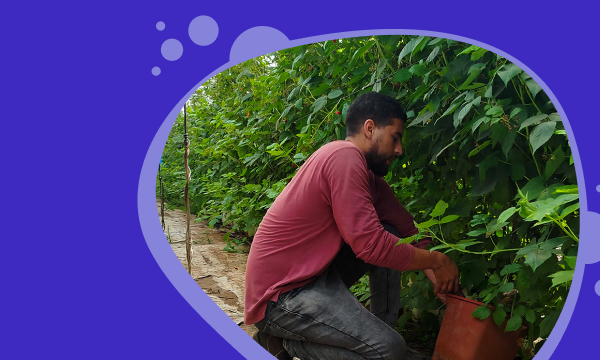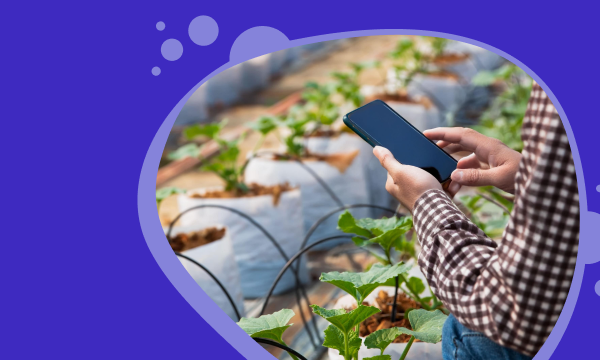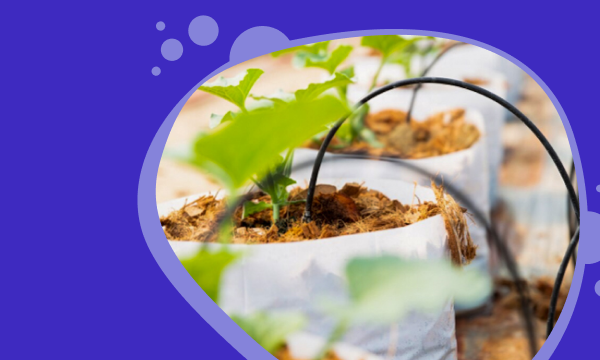
- IRRIGATION
- CROP MANAGEMENT
- BLUEBERRY
- ARTICLE
Optimized: Berry Irrigation in Morocco
A leading Moroccan berry grower cut water use by 16% using climate data and ETo-based irrigation....
11.02.2025 | 3 min read
Digital agronomy refers to the integration of advanced technologies and data analytics in agriculture to enhance farming practices. By delivering precise, real-time information, it enables growers to optimize various aspects of farming, including irrigation management, understanding microclimates, and effectively managing pests and diseases. This approach not only improves resource efficiency but also promotes sustainable farming practices, ultimately leading to increased productivity and reduced environmental impact.
Remember when mobile phones only made calls and sent texts? Modern smartphones transformed
communication by offering apps, real-time updates, and endless information at your fingertips.
In a similar way, digital agronomy is an upgrade in crop management, providing better insights and more functionality. Just like a smartphone, a crop management platform is continually evolving, so you always have access to the latest tools to adapt to changing climatic conditions. With crop management software, the possibilities for optimizing your farming practices are endless.
Transitioning to digital agronomy can be transformative but often meets resistance. Moving from traditional methods to data-informed farming can feel daunting, especially with new tools and processes. However, the true impact lies in focusing on people and their needs. Technology is the tool, but purpose drives progress.
A clear plan is key to a smooth transition. Here are tips to help your team embrace digital agronomy, understand its value, and feel confident using new tools.

Explain the ‘why’ behind the change: Start by clearly communicating the reasons for adopting digital agronomy. Highlight how data insights can help reduce guesswork, optimize resource use, and improve crop outcomes.
Encourage open communication and feedback: Resistance to change is often due to fears and misconceptions about the unknown. Address them early as possible listening to your team’s concern. Effective communication is at the heart of successful change management.
Be or assign a ‘Champion’: We have observed that growers who designate someone to champion a new solution in the workplace have more success with the implementation and use of the tool.
Start with small incremental changes: Small changes can lead to big improvements. Start with one area, test adjustments on a small scale, evaluate results, and scale up gradually to minimize disruption.
Share data insights and success stories regularly: As data insights begin to show results, share them with the team. For example, show how a new irrigation schedule based on data has led to healthier crops or how pest forecasting has reduced pesticide use.
In summary, change management is key to helping farm staff adopt new solutions. Managers must take responsibility to ensure their team feels supported during the transition and understands the benefits for both the business and themselves.

Transitioning to digital agronomy isn't just about adopting new tools; it’s about learning to use data to drive decisions. Start with automating data collection and centralizing information. As your data literacy improves, you can enhance crop health, irrigation, and pest management, leading to better yields and quality.
As shown in the illustration above, the journey to unlocking benefits of digital agronomy starts with automated and digital data collection and data centralization. From here, we move up to crop risk management, resource and variable input management, optimization in infrastructure, improved climate, irrigation, crop health, pest & disease management, and ultimately, increased data yield and quality.
The biggest advantage of using data on your farm lies in effective change management and improved data literacy. Beyond driving efficiency and cost savings, data should empower people and contribute to building a better future.
The danger with so many data collection tools available is that the farm staff might feel overwhelmed with information.
To counter this, growers can:
Set clear objectives on what outcomes they want to achieve and the decisions that need to be made to reach these.
Identify ways to filter out irrelevant data, such as building a main information dashboard showing only the relevant data points needed to make decisions.
Decide how often data needs to be collected and analysed for decisions to avoid excess
Download our practical guide for growers, complete with a checklist for data-informed decision-making.
Digitize and unify their data: Access centralized, real-time farm data from anywhere, allowing you to compare plots and stay updated on your farm’s status.
Make better decisions: Utilize detailed insights and trend analysis to customize and optimize your farming practices.
Save time spent and money: Automate tasks to reduce resource consumption and minimize your farm’s environmental impact.
Protect crops: Receive early alerts for potential pests, diseases, adverse climate or weather, enabling proactive crop protection.
Boost yield and quality: Make timely, informed decisions to improve both the quantity and quality of your produce.
Seamless integration: FarmRoad’s open API allows for easy integration with third-party systems, enhancing data management and analysis.
Expert support: Gain access to our team of agronomy and crop science experts for personalized guidance and support.

FarmRoad digital agronomy solution
Data is essential for the future of farming. It makes crop management more efficient and sustainable by integrating technology. As global food demand rises and climate change creates new challenges, producing more with fewer resources has never been more crucial. In regions facing water scarcity, data can precisely measure water needs and optimize irrigation schedules, leading to reduced waste and more sustainable practices.
By embracing digital agronomy, you unlock the potential to make more informed decisions that lead to better crop management. Whether it's improving irrigation, managing pests, or optimizing harvest timing, data is your key to achieving higher yields, better quality, and greater sustainability.
Not sure where to start? WayBeyond is here to support your digital agronomy journey. Let us help you transition to a data-informed approach and improve your crop outcomes. See how our customers do it. Click here.
If you missed our introductory article on leveraging data for effective crop management, you can read it here.
Get the full guide, complete with a checklist, on using data to make informed crop management decisions.

A leading Moroccan berry grower cut water use by 16% using climate data and ETo-based irrigation....

ETo forecasting is a simple but powerful tool for optimizing irrigation every day, in every season....

See the strategy behind evapotranspiration-based irrigation planning that helped a greenhouse...

Learn how six key weather data points can help you make smarter irrigation decisions, conserve...

A smart approach to water management is key to helping growers tackle water scarcity and climate...

Uncover the vital role of drip and drain monitoring in optimizing drip irrigation farming.

Explore how protected cropping growers can use data insights to drive smart irrigation practices.
.png)
Learn how Khawla Derstaouieh embraces digital agronomy to optimize irrigation, track pests, and...

Heatflation is rising food prices caused by extreme heat from climate change. How can protected...
Champions of crop management.
Giving commercial growers the power to make better crop management decisions and optimize crop outcomes.
Solutions
Customers
©2025 WayBeyond. All Rights Reserved.